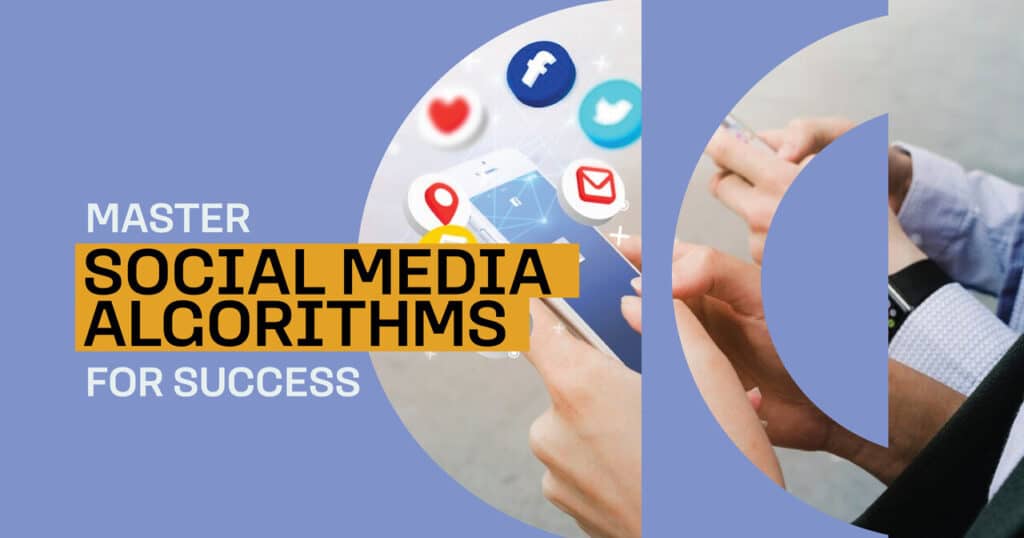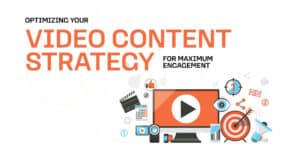Social media platforms, in this age of digitization, can power the connection and sharing of content and engage business owners and individuals with their audience. Through all this growth, the algorithms of these social sites have also become complicated, so one needs to understand them if one wants to make it big. In this article, we will explain how social media algorithms work, why they matter, and give actionable tactics to win the algorithm game on social media and attain social media algorithm success.
Why Are Social Media Algorithms Important?
There is an algorithm at the core of every social media. Algorithms act as gatekeepers that decide what content to display and in which order to present that content. It is the reason some posts go viral, and others just do not seem to make a dent. To fully leverage the power of these algorithms in maximizing your content’s visibility, there’s a need to understand social media algorithms.
Filter Out the Content Noise
Every second, millions of bits of content are published on social media. It could be daunting trying to watch everything without assistance from the algorithm filtering through the noise that comes attached to every action. Such platforms allow it to filter through noise and serve individuals with the information they so desperately need. It measures everything by which people are consuming, from likes, shares, and comments, with such assessment, only valuable content to users or more aligned with their behavior appears.
Show Users More of What They’re Interested In
One of the main reasons social media sites use algorithms is to improve the user experience. By showing users content that is aligned with their past interactions, these sites increase user engagement. Whether it is showing more photos of cats to someone who frequently likes animal content or recommending videos from influencers they follow, the algorithm seeks to match content with user preferences.
Personalize User Experience
The more the algorithm interacts, the more it learns about the preferences of a user. This level of personalization makes the experience more engaging, as users are likely to interact with the content they see. For businesses and content creators, this offers an opportunity to tailor posts in ways that will resonate with the audience, increasing the chances of engagement.
Maximize Organic Reach
The next thing to learn is for the brands and creators who have no interest in growing through paid ads to learn to work with the algorithm if they want to maximize organic reach. To that end, if you understand which types of content will have a better chance at the algorithm’s prioritizing it, you can post with a greater likelihood of reaching a greater number of people without necessarily advertising.
Understanding How Social Media Algorithms Work
Social media algorithms are based on data and machine learning. When these sites collect a vast amount of data, the algorithms grow precise. Let’s go into more depth about the matter.
Algorithms Search for Relevant and Valuable Content
In simple words, social media algorithms are to deliver content that users care about. This can be in terms of information, entertainment, or inspirational content. Successful engagement with platform algorithms involves content that fits your audience’s interests. The better the fit, the higher it’ll rank in their feed.
Signals and Important Factors Social Algorithms Consider
They always keep several signals in mind to determine what to serve. These signals are as follows:
| Engagement | Likes, comments, shares, and clicks indicate that your content is something worthy of sharing with a greater audience. |
Recency |
Fresh, new content tends to be favored, particularly on platforms like Twitter and Instagram, where users are always thinking about what is currently happening. |
| User Engagement | The more a user engages with your content (or similar content), the more likely your future posts will appear in their feed. |
Social Media Algorithm Example
Consider Instagram. Its algorithm considers factors such as:
- Engagement. Content that is liked, commented on and shared is pushed up higher in users’ feeds.
- Relationships. Content from accounts that users interact with often is prioritized.
- Timeliness. Newer posts are ranked over older ones, though Instagram now uses a combination of recency and relevance to rank posts.
Knowing these factors will help you tailor your content to what the algorithm is looking for.
Social Media Algorithms by Platform
Now that you know how an algorithm works in general, let’s understand the specifics of algorithms related to different social media.
Twitter Algorithm
The algorithm of Twitter focuses on timelines and relevance. The closer a tweet is to the event and relevant to the hot conversations, the more a user will see it appear in their feed. Second, Twitter also looks for engagement signals like retweets likes, and replies.
Facebook Algorithm
Facebook’s algorithm is set up to maximize meaningful interactions between its users. It is working much on posts from close friends, from the family, and with those groups that it comes across frequently. It will favor conversation-spurring content, so posts that earn a lot of comments get more reach.
Instagram Algorithm
Instagram’s algorithm prioritizes content based on user engagement across different sections. In the Feed, posts from accounts you frequently interact with- through likes, comments, or messages – are ranked higher. Stories are organized by recency and interaction, placing updates from close connections at the top. The Explore section highlights engaging posts from accounts you don’t follow but are likely to find relevant. Lastly, Reels gain prominence due to their short, engaging format, with high-viewer interaction boosting their reach.
TikTok Algorithm
TikTok’s algorithm is known to be efficient in helping videos go viral overnight. It is majorly dependent on user engagement, including the duration a user spends watching a video and interactions like likes, comments, and shares. TikTok’s algorithm also considers how often a user interacts with certain creators.
YouTube Algorithm
The YouTube algorithm is highly based on watch time. Videos that will keep users longer on the site have a higher chance of showing up in recommendations. In addition, videos with high engagement such as likes, comments, and shares are ranked higher by the algorithm.
LinkedIn Algorithm
The algorithm of LinkedIn is professional, and mainly it focuses on the relevance of posts that are discussions. Posts from connections or colleagues who receive engagements tend to appear on feeds.
Pinterest Algorithm
Relevance and engagement are Pinterest’s main emphases. A pin gets ranked depending on the repins, clicks, and comments made on it. The frequency at which different kinds of pins attract engagements is also considered on the site.
Reddit Algorithm
Reddit’s algorithm relies on upvotes and downvotes. Any content having a greater upvote score than the downvote score received by the community is ranked higher and, most of the time appears on the front page.
Tumblr Algorithm
Tumblr’s algorithm is largely similar to that of Reddit, but here, it lays more emphasis on engagement metrics like likes, reblogs, and comments. As much as a post causes activity, it has a higher likelihood of being viewed in front of an audience.
10 Tips for Staying Ahead of the Algorithm and Optimizing Your Content
You now know how algorithms work across platforms. Let’s have a look at some actionable tips that can help you succeed with platform algorithms and keep your content ahead of the curve.
- Ask Questions and Encourage Comments from Your Audience
Engagement is the new ranking factor. Encourage your audience to leave comments and ask questions. The more interaction in your posts, the better they will rank in algorithms.
- Tag Other Accounts in Your Posts
Tagging other people or brands in your post can increase the chances that those accounts will engage in your content. That means bigger visibility and possibly more followers.
- Tack on the Right Hashtags and Keywords
Hashtags and keywords are key to making your content findable. Research popular and relevant hashtags and add them to your posts for a higher chance of getting seen.
- Optimize Your Post Timing to Encourage Engagement
Post when your audience is most active to increase the chances of getting immediate engagement. Use insights and analytics tools to find the best times to post.
- Figure Out Your Publishing Frequency
There has to be a constant publishing frequency. Posting too much at once will overwhelm an audience, and posting too rarely makes you invisible. Just find a rhythm that feels good for your audience.
- Publish More Video Content Across All Networks
Video is one of the greatest-performing types of content on all platforms. In any case, whether this might be short-form videos, live streams, or educational videos, video needs to find a bigger role in the strategy.
- Craft Relevant and Engaging Captions
Captions are great for engaging your audience. Ensure that your captions are interesting, ask questions, and include a call-to-action to encourage further interaction.
- Experiment with Different Types of Content (Template)
Don’t be afraid to try out different types of content to see what the audience likes best. Examples include infographics, polls, stories, or carousel posts.
- Measure Performance
Track the performance of your posts regularly. Use analytics to see what types of content are performing best and tweak your strategy accordingly.
- Embrace New Features
Social platforms often prioritize new features in their algorithm. Whether it’s Instagram Reels or TikTok’s latest tools, embrace new features early to take advantage of their visibility boost.
AI’s Role in Social Media Algorithms
Artificial Intelligence has greatly influenced the way social media algorithms function. It helps platforms handle massive content, analyze user behavior, and provide personalized feeds to improve the user experience.
- Flagging of Misinformation and Fake News
Artificial Intelligence identifies and marks out misleading or false content as well as ensures a safe internet environment for users.
- Moderate Content for User Safety
AI tools will monitor and moderate the content automatically. Harmful or offending content will be flagged or removed promptly.
- Personalize Content Delivery
AI studies user behavior. Learning is developed from interactions, likes, shares, and comments made in a certain piece of content so that it can be delivered most likely to engage the user.
- Provide Real-Time Analytics
AI helps the platforms to provide real-time analytics of content performance. This gives the content creators an idea of how to adjust their strategies and track their success.
Final Discussion on Social Media Algorithms
Mastering social media algorithms is crucial in building a strong online presence. Whether you’re an influencer, business, or content creator, understanding social media algorithm success can give you that edge you need to expand your reach, engagement, and impact. All that you need to do to boost your visibility, reach your audience in a better way, and outplay the algorithm on social media is to align your content with social platform algorithm strategies. Start these strategies now and watch your social presence rise!
FAQ’s
- What are social media algorithms?
Social media algorithms are automated systems used by platforms to decide which content to show users based on their preferences, past interactions, and engagement signals.
- How can I succeed with platform algorithms?
To succeed with platform algorithms, create high-quality, engaging content that resonates with your audience, use relevant hashtags, and post consistently.
- How do social media algorithms determine what I see?
Algorithms prioritize content based on engagement, recency, and relevance, showing you posts from accounts you interact with most frequently.
- How can I beat the algorithm on social media?
Focus on increasing engagement, posting at optimal times, using popular hashtags, and experimenting with different types of content to boost visibility.
- Why do some posts go viral on social media?
Posts that receive high engagement (likes, shares, comments) early on are favored by the algorithm, increasing their chances of going viral.







